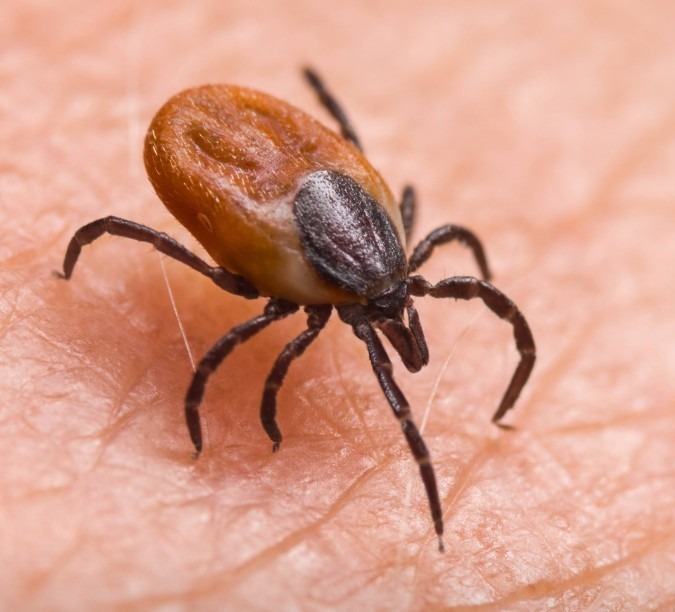What is a tick?
Ticks are small brown and black arachnids that measure barely half a centimeter. These animals are mainly active between March and October and feed on the blood of vertebrates, including humans. To do this, the tick uses anesthetic and anticoagulant substances in its saliva. This makes its bite painless. However, caution is advised, as approximately 14% of ticks are infected with the Borrelia bacterium.
Why is a tick bite dangerous?
Most of the time, the immune system manages to destroy the Borrelia bacteria, and such an infection does not pose a problem. But sometimes, this is not the case, and the person then develops Lyme disease. The risk of contracting Lyme disease after a tick bite remains quite low, with an average percentage of 2%.
If this is the case, it usually begins with the appearance of a rash in the form of a reddish circle around the bite. This spot does not appear immediately, but only after several days or even weeks. In people with dark skin, it will tend to be blue in color. There is also a chance that the infected person will develop a mild flu-like syndrome.
If medication is not taken at this time, the disease can spiral out of control, leading to severe joint pain, heart problems, and even paralysis.
00:00
00:00 / 02:21
Where are you most likely to encounter a tick?
According to a study by Sciensano, ticks are most commonly found near the home. The latest figures (from 2023) show that around three-quarters of people are bitten within a five-kilometer radius of their homes. Most cases occur in the garden (48.2%) or in a forest (34.6%). Ticks are mainly found on the ground or in the lower layers of vegetation. Contrary to popular belief, this insect does not jump or fall from a tree.
What is the best way to check if you have a tick?
If you’ve been working or playing in the garden, be sure to check for bites anywhere on your body. Even if you were wearing protective clothing. The sooner you discover a tick, the better. Ideally, you should take action within 24 hours. If the tick isn’t yet engorged with blood, it looks like a tiny dark spot on your skin. It can easily be mistaken for a freckle or mole. A tick that has had time to feed on blood is easier to recognize because it’s larger and spherical.
Ticks most often bite on the head, at the hairline, and behind the ears. They also like to hide in the armpits, navel, back, groin, inside the knee, or near the buttocks. Sometimes, some find their way between the toes.
How to remove a tick?
It’s important to properly remove a tick if you find one. There are various tools for this purpose, such as tick tweezers, a tick card, etc. Whichever tool you use, always bring it as close to your skin as possible. Avoid crushing the tick’s abdomen, or it will vomit, increasing the risk of infection with the Borrelia bacteria. Then remove the tick in one smooth motion without twisting it.
Don’t have anything handy? You can then make a loop with a piece of thin thread, or ask someone with sharp nails to remove the tick in one go by scraping along your skin. However, it’s best to wait a bit to safely remove the parasite later.
Is part of a tick stuck in your skin? Don’t panic: the bacteria can’t be transmitted this way if the rest of the procedure was carried out correctly. Only a minor infection is possible. So clean the wound with soap and water or a disinfectant and take good care of it.
Important detail: If you are bitten by a tick, follow up closely. Pay attention to any symptoms for a month, such as flu-like symptoms or the formation of a red, ring-shaped spot.
You can also perform a test to detect the presence of the Borrelia bacteria. To do this, some doctors test both IgM antibodies (which are the first to appear in the event of contact with an infectious agent) and IgG antibodies (which appear later). But infectious disease specialists mainly look at whether IgG antibodies are positive to determine whether a person has indeed contracted Lyme disease. The reason: IgM antibodies can appear for many reasons, not always related to a worrying presence of Borrelia.
Finally, beware: there are laboratories that perform false tests for Lyme, either by giving disproportionate importance to IgM, or by lowering the threshold for IgG positivity to make a test more likely to be positive. These labs then offer treatments that are not approved by scientific studies. Therefore, always be sure to contact recognized health institutions and certified infectious disease specialists.
